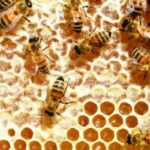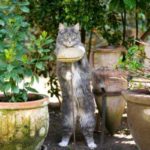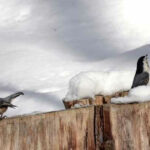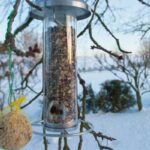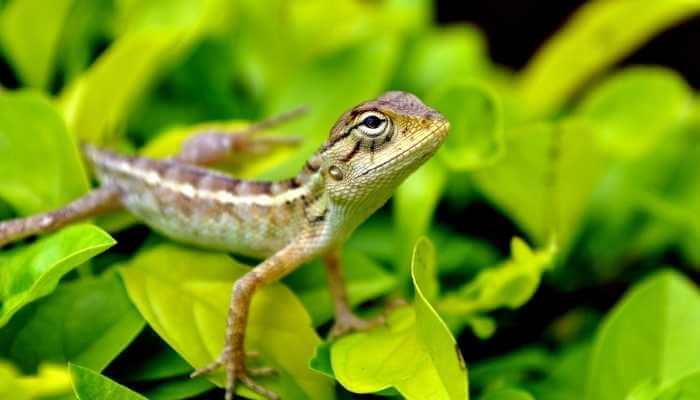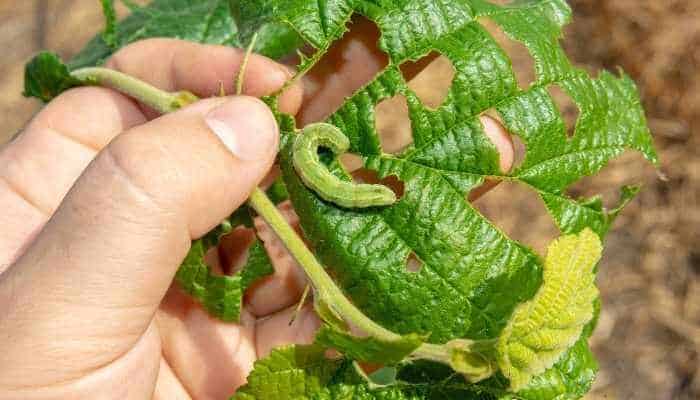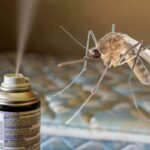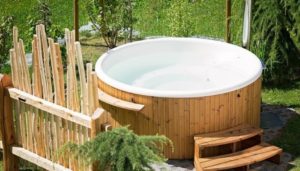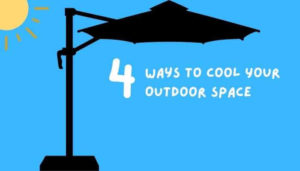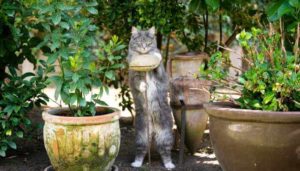You’ve seen them out there all puffed up like little colorful snowballs in the wintertime, looking for food and scraping by. But should you feed the birds that are hanging around your yard?
Because most birds need food during temperature extremes when their standard food supply is lacking or while on migration, it is helpful of you to provide birds with their kind of food during the winter. It can be vital.
So, what should you feed your birds during the winter, and how should you supply them? I go over all of this and more below!
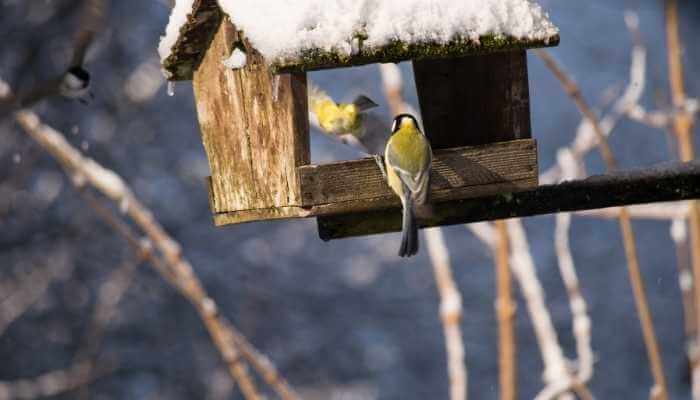
Get to Know Your Birds
You need to know what birds visit your garden or yard regularly during the winter. You need to know which birds are present to determine what they eat. It does no one any good to put the wrong sorts of food out for your birds. Some birds eat suet, others seeds, and others fruits.
Here is a listing of common North American wintering birds and their favorite foods. If you’d like me to come up with a listing for your neck of the woods, just let me know. But it’s easy to research for yourself or, even better, give the project to a kid who needs something to do.
| Bird | Food |
|---|---|
| robins, chickadees, nuthatches, woodpeckers, cardinals | mealworms |
| waxwing, robin, thrush, bluebirds, tanagers, orioles, sparrows, crows, blackbirds, pigeon, finches, warblers | fruit (unused, partially bad cut it up and add it to the feeder area) |
| most birds | mixed seeds (no oats or milo as there is no nutritional value to these grains) |
| most birds | unsalted peanut butter (idea below) |
| grouse, pheasants, quail, turkey, cardinals, grosbeaks, crows, jays, doves, ducks, cranes. | cracked corn (other wildlife love it too) |
| sparrows, quail, doves, towhees, crows, jays, blackbirds, finches, cardinals, and wrens | White proso millet (seeds or actual sprays of the plant that can be hung up or left on the ground.) |
| nuthatch, woodpeckers, tits, tanagers, sparrows, buntings, and bluebirds | suet meals |
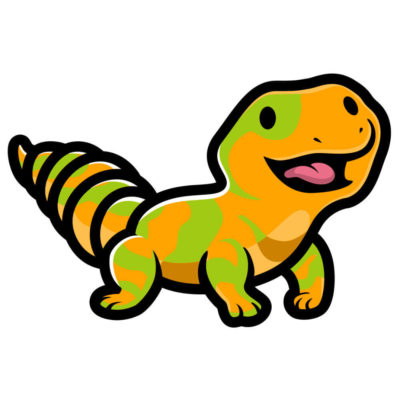
Boost’s Tips
Recipe for adding eggshells to your wintering birds’ diets:
- Rinse your egg shells
- Bake egg shells at 450ºF for 10 minutes
- Cool the eggshells and crush them
- Add them to your bird table or the ground near your feeder or even around your beds to not only feed birds but deter slugs
What Not to Feed Birds
There are several things that are toxic to birds, including, chocolate, salt, and milk. Table scraps, rotting food, and meat are not good for birds, not only due to the additives but because these things can easily grow mold and mildew, and bacteria. Also, table scraps and meat can attract unwanted animals more than birds. Don’t feed birds bread – it fills them up but adds no nutritional value.

Boost’s Tips
Quick and Easy Peanut Butter Bird Feeders
- Gather well-opened Pine Cones
- Slather the cones with unsalted peanut butter
- Roll the slathered cones around in mixed bird seed
- Use looped yarn to tie and hang them from trees or other places in your backyard.
Helping Birds During Winter
Besides going by what kind of birds you have visiting you and what they need, you may want to know just some overall information on keeping food for the little rascals and helping them out over the winter. I’ve also got some information on some other ideas for helping your feathered friends make it through a cold winter. Just keep reading!
Plan a Winter Garden
Winter gardens provide shelter and sustenance for wintering birds. That being said, planning to have some evergreens is a good idea. Arborvitae, holly, and several shrubs are winter-appropriate. Many also produce cones, which provide seed.
When preparing the other plants for your winter garden, plan them east to west. This provides plenty of sunlight and will help all of your plants thrive. Let some leaves and straw build up around the edges of the garden or under the trees and shrubs to shelter insects – which many birds like to eat.
Find plants that can provide nectar or fruit, not just shelter. If you want splashes of color, plan for that, too. Grasses and plants with strong vertical stems make for a good border in front of the evergreens. Winter Honeysuckle, Witch Hazels, Crab Apple, Virginia Creeper, Winterberry, Bayberry, Viburnums, Service-Berry, Hackberry, Chokeberry, Staghorn Sumac, Holly, and more.
Some vegetables grow well in a winter garden and can be shared. Some examples include chard, spinach, kale, garlic, leeks, radishes, onions, and rhubarb. It’s also perhaps a good idea to place your bird feeders and a water source in or near the garden.
Add a Clean Source of Water
In most cases, birds have difficulty finding water to drink in the winter. And while they’re looking, they wind up expending energy that they could be used for keeping warm. A heated bird bath or a bird bath that you make sure is not frozen can be a lifesaver for wintering birds. It may be a good idea to keep it a bit closer to the patio so that it can be plugged in. Or if you can keep it close to a winter garden, that might be preferable.
When you need to keep the water from freezing, remember not to use salt as it is toxic to birds. Instead, just use some ping-pong balls that float on the surface to help keep the water from freezing. Like I said before, we used to go out and check it daily, refreshing the water with warm water. These days you can purchase a heated bird bath.
Great Tips on Bird Feeders
Placement
Feeders should either have a cover or be placed somewhere that there is a cover – so the seeds don’t get wet. But also be aware of the space that’s needed around it. It should be at least 5 feet (1.5m) away from any walls. I know many people love placing feeders at the windows, but this could be dangerous for any over-enthusiastic fliers. Place your feeder away from windows that might act as mirrors or a confusing obstruction to birds, who can and will crash into windows and break their necks.
Capacity
You want to make sure you get a feeder with the capacity to handle your bird population. If you have some selfish birds or bullying birds, you may want to get more than one feeder. This ensures every little feathered friend has a chance for some good food.
Maintenance
Keep your bird feeder clean to protect birds. Many things can begin happening when you don’t clean the bird feeders enough. For one thing, the seeds can get stuck. If seeds sprout or get damp and begin to grow mold, it harms the birds you’re trying to help.
To protect the seed from getting wet in the first place, make sure your bird table or feeder is protected or has some sort of cover. This protects the seed and can provide a bit of shelter for smaller birds caught in a sudden storm.
Buying bird seed in bulk is usually cheaper than the alternative, but try not to get more than 2 – 4 weeks’ worth if you’re going to store it. That way, it won’t go bad. You should store your extra birdseed in a cool, dry place outside your home. Whether in your garage (you know who you are) or outside the home (like we suggested), it should be in a sealable container to keep out rodents and insects.
Remember
If you get in the habit of feeding any animals during the winter and you wind up sick or need to leave your home, get a trusted friend or neighbor to continue feeding them. They get into the habit of coming to your garden for goodies, and if that food source is gone, they have to realize it and then find new sources, which takes a lot of energy they may not have.
You get benefits from this situation as well. The birds will hang around, even until spring or summer in most cases. That means as you stop feeding them so much, they’ll enjoy a nice diet of slugs, snails, and other insects you’d rather not have around. Just keep the bird bath available and your garden can remain bird-friendly.
I hope you found the article helpful and informative! Get your winter garden going this fall and stockpile those bird foods you know you’ll need! And don’t forget… don’t get mad at the squirrels for taking advantage. They gotta eat, too.
